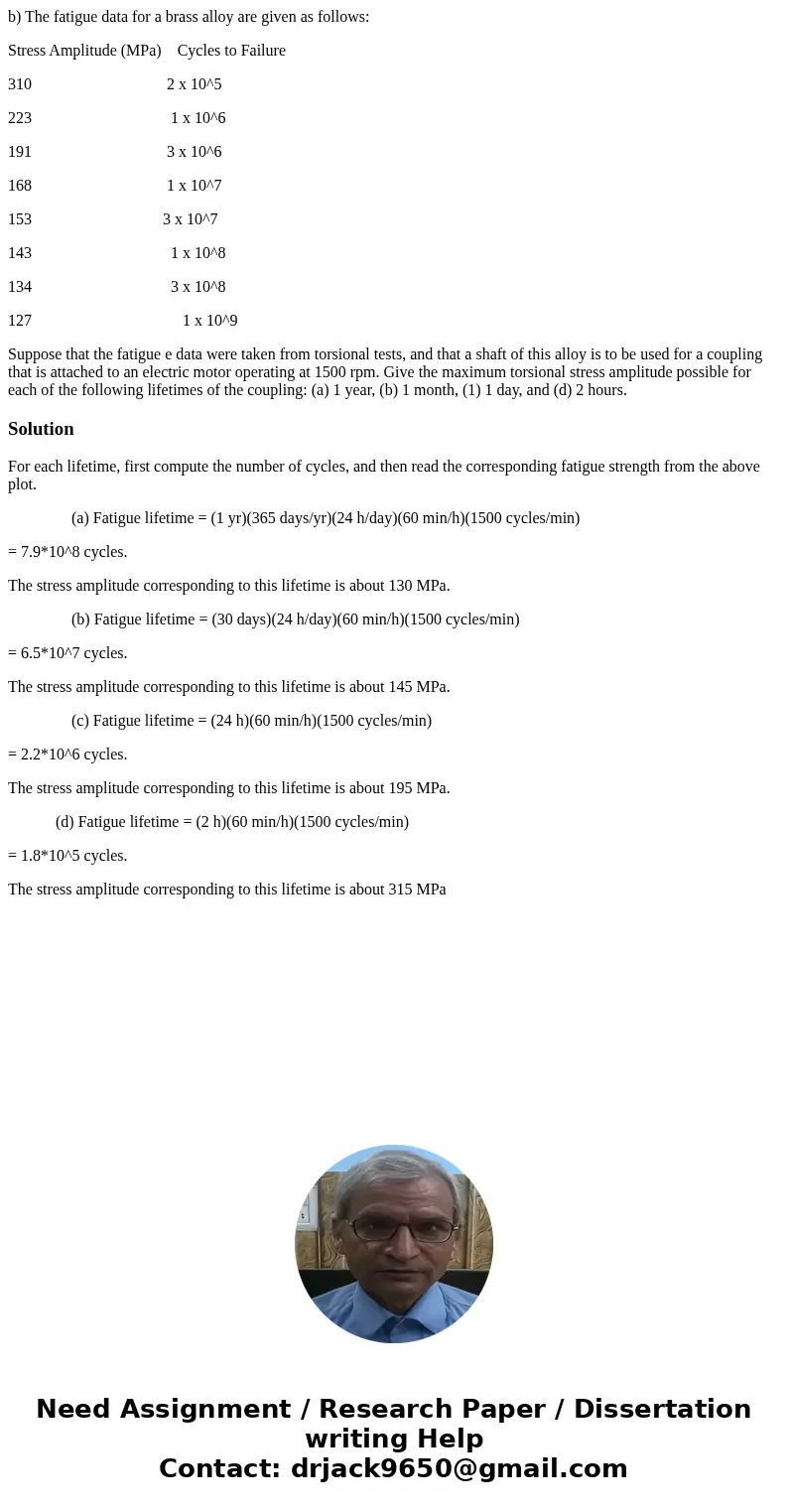b The fatigue data for a brass alloy are given as follows St
b) The fatigue data for a brass alloy are given as follows:
Stress Amplitude (MPa) Cycles to Failure
310 2 x 10^5
223 1 x 10^6
191 3 x 10^6
168 1 x 10^7
153 3 x 10^7
143 1 x 10^8
134 3 x 10^8
127 1 x 10^9
Suppose that the fatigue e data were taken from torsional tests, and that a shaft of this alloy is to be used for a coupling that is attached to an electric motor operating at 1500 rpm. Give the maximum torsional stress amplitude possible for each of the following lifetimes of the coupling: (a) 1 year, (b) 1 month, (1) 1 day, and (d) 2 hours.
Solution
For each lifetime, first compute the number of cycles, and then read the corresponding fatigue strength from the above plot.
(a) Fatigue lifetime = (1 yr)(365 days/yr)(24 h/day)(60 min/h)(1500 cycles/min)
= 7.9*10^8 cycles.
The stress amplitude corresponding to this lifetime is about 130 MPa.
(b) Fatigue lifetime = (30 days)(24 h/day)(60 min/h)(1500 cycles/min)
= 6.5*10^7 cycles.
The stress amplitude corresponding to this lifetime is about 145 MPa.
(c) Fatigue lifetime = (24 h)(60 min/h)(1500 cycles/min)
= 2.2*10^6 cycles.
The stress amplitude corresponding to this lifetime is about 195 MPa.
(d) Fatigue lifetime = (2 h)(60 min/h)(1500 cycles/min)
= 1.8*10^5 cycles.
The stress amplitude corresponding to this lifetime is about 315 MPa

 Homework Sourse
Homework Sourse